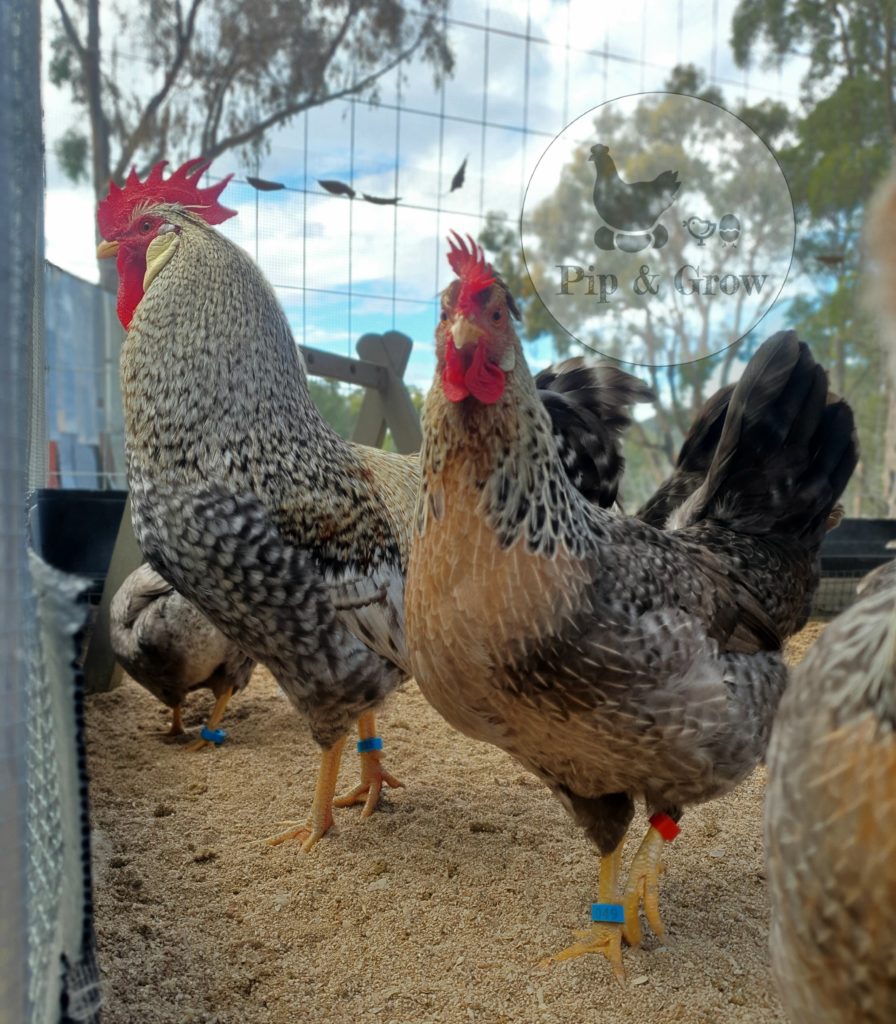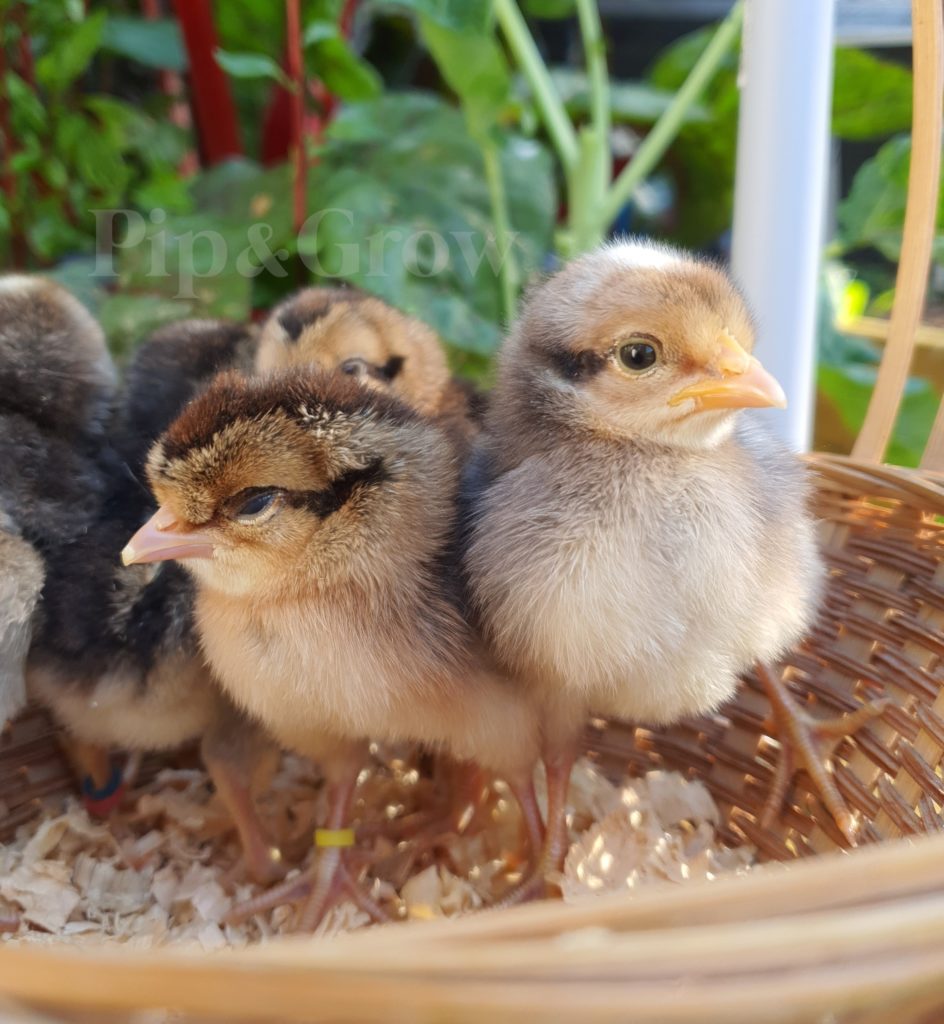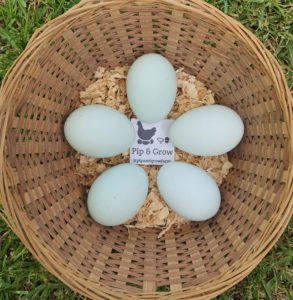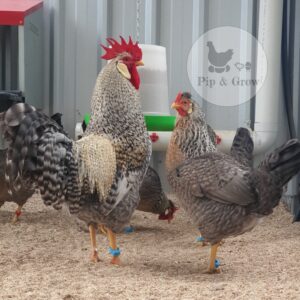Cream Legbar
Standard, Auto-Sexing, UK import and AU line

- Originated from UK
- Mature weight is under 2.3 –3.2kg
- Fast growing, early maturing – first egg around 6- 7 months
- Large– Extra large sized pastel blue coloured eggs, expected to lay around 200 -220 per year.
- Broodiness – Low
- Maintenance – Low
Cream Crested Legbar is a unique breed of chicken known for its distinctive appearance and colorful eggs. Originating in Britain, this breed is prized for its beauty, friendly temperament, and excellent egg-laying capabilities.
Cream Legbar is an autosexing chicken breed that was developed in the early 20th century at the University of Cambridge in England. Barred Plymouth Rock was chosen for its barring gene, which is crucial for the auto sexing characteristic, and the Brown Leghorn was selected for its good egg-laying abilities and hardiness. Araucana genetic was introduced into the mix for their *blue egg laying trait and crest. (Please see Blue egg genetic note below.) Cream Legbars are considered autosexing, meaning you can reliably determine the sex of the chicks at hatch based on their coloration. In this breed, male and female chicks exhibit distinct markings that allow for easy sexing. However the accuracy of auto sexing quality can heavily rely on the quality of the line. They are known for their friendly and sociable nature. Active and inquisitive, they thrive in free-range environments where they can forage and explore. While they can be trained from a young age and enjoy human interaction, they are not as naturally cuddly as breeds like Orpingtons. While they generally tolerate various temperatures, they are less adept at coping with cold compared to heat. Being a lightweight and lean breed, they benefit from coops with sheltered areas during harsh weather conditions, and due to their tendency to be flighty, high fences may be necessary. Our 2025/26 Cream Legbar breeders are selected from two different imported lineages. Our rooster carries a true cream color with minimal chestnut leakage and an erect comb. Hens exhibit salmon breasts with cream hackles and well-defined crests. Our chicks, with clear markings, can be easily sexed upon hatching. Please see Legbar – Open Poultry Standard Australia for more info and breed standards.Cream Legbar Chicks
Cream Legbars are an auto-sexing breed, meaning chicks can be sexed upon hatch based on their color and markings.

Female Cream Legbar chicks hatch with defined eyeliner and distinct back markings. In contrast, male Cream Legbar chicks typically have a more noticeable white dot on the top of their head shortly after hatching. These visible differences make it possible to accurately sex the chicks immediately after they hatch.
Cream Legbar : Egg colour genetic
 Although all of our breeders are hatched from “blue eggs,” confirming the genetics behind this blue color takes a few generations of breeding. This is because the blue egg color is dominant over white, meaning some of our breeders may or may not carry the recessive white egg gene.
Although all of our breeders are hatched from “blue eggs,” confirming the genetics behind this blue color takes a few generations of breeding. This is because the blue egg color is dominant over white, meaning some of our breeders may or may not carry the recessive white egg gene.
Please note that a Legbar hatched from a blue egg can possibly produce “white eggs” if two copies of the recessive white egg gene are present. This may still occur even the birds were hatched from blue eggs parents. This is not a result of crossbreeding by us and does not reflect the visual quality of the line. This is a known issue in blue egg breeds and is more about breeders identifying and selecting carriers each season. This can happen in our line and we want to leave a clear note here so there is no misunderstanding and customers can make an informed decision accordingly. Read more about blue egg genetic (Click to view)
Related post – Cream Legbar Sexing Tips
